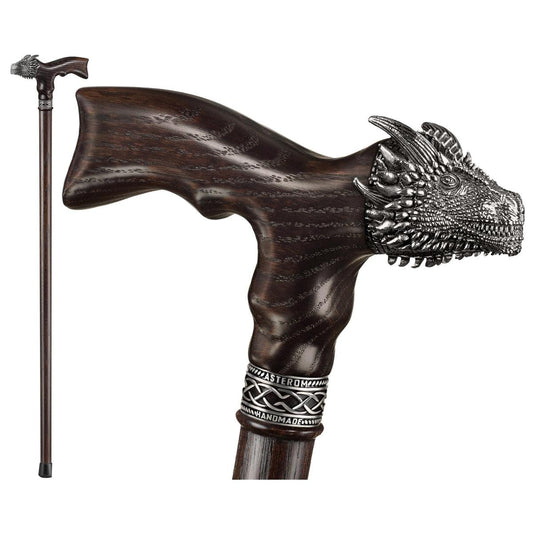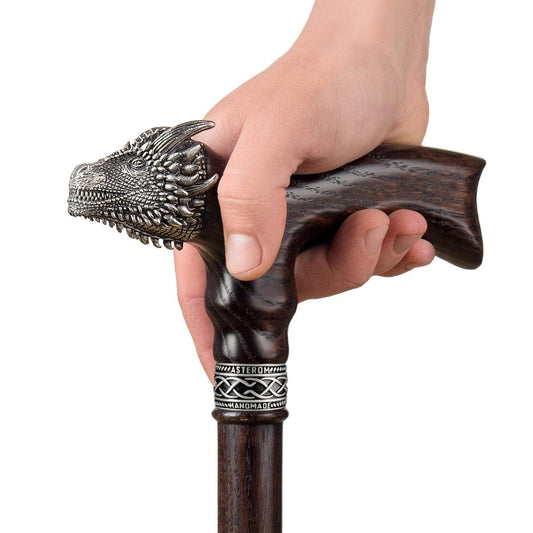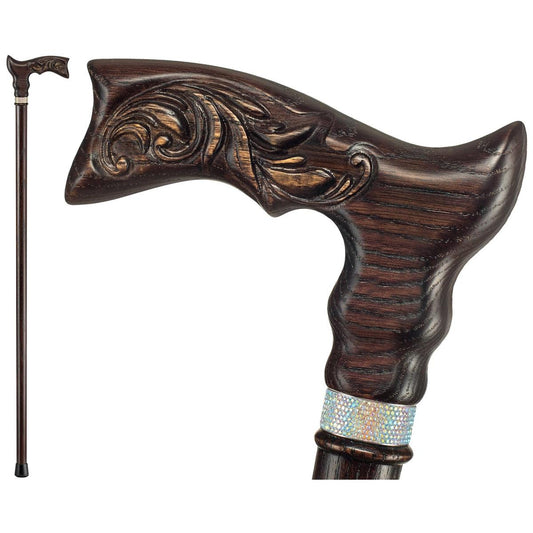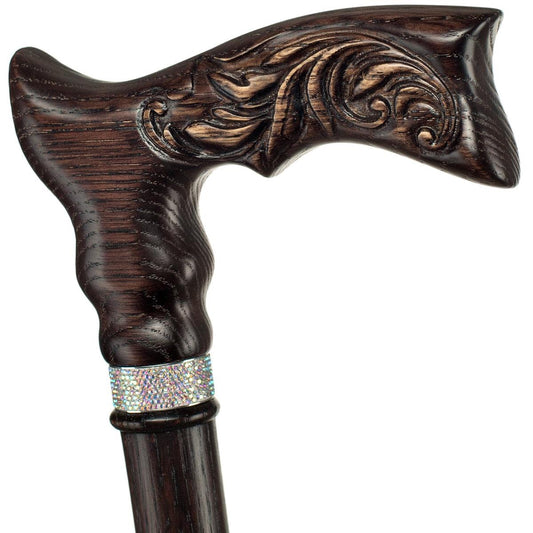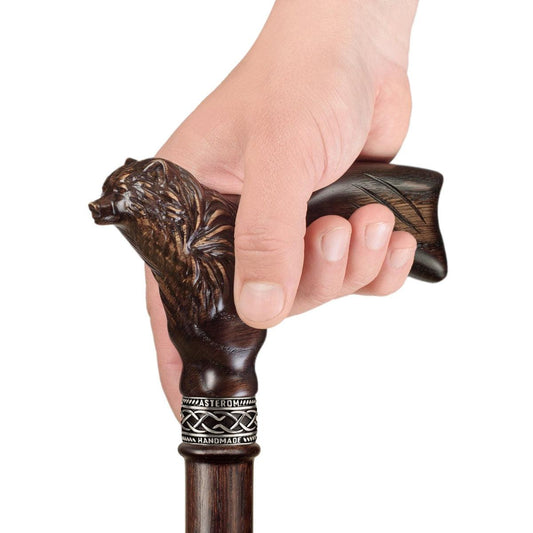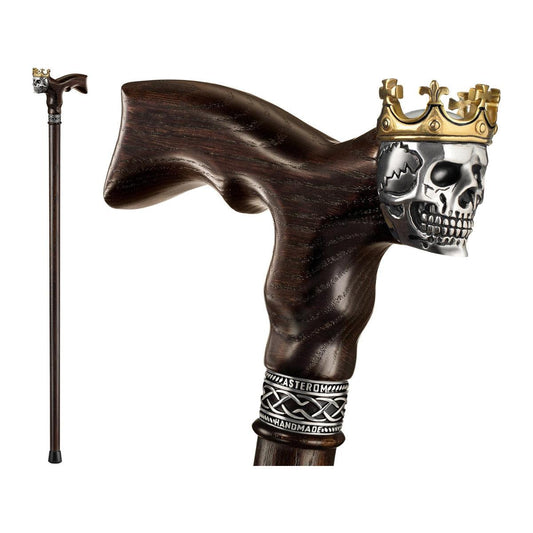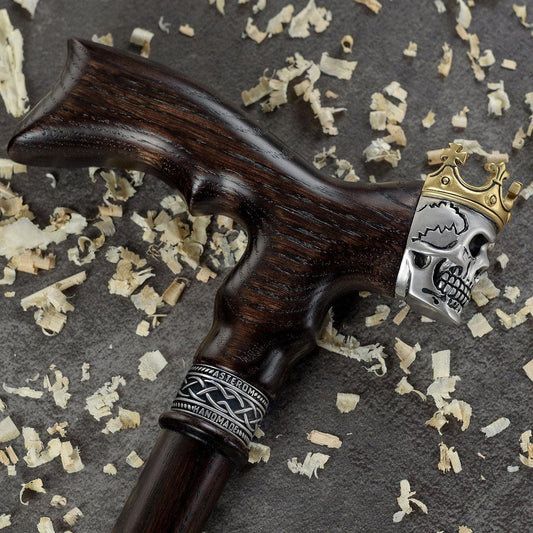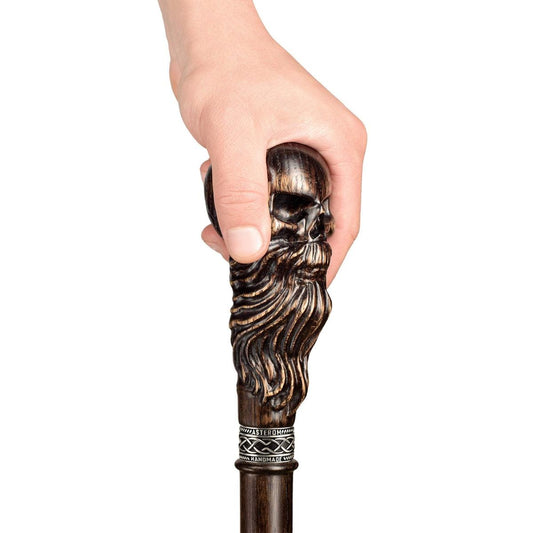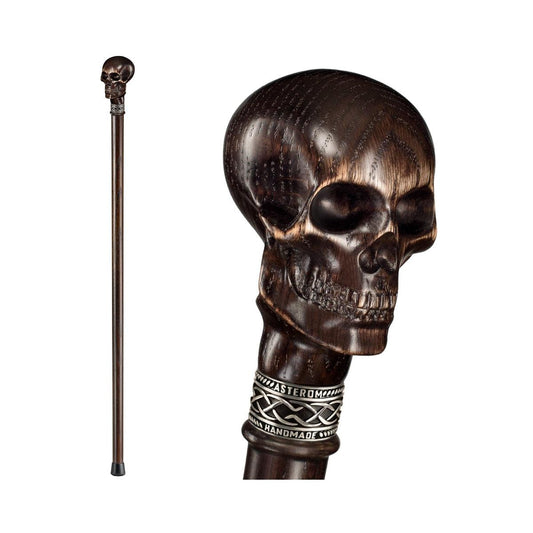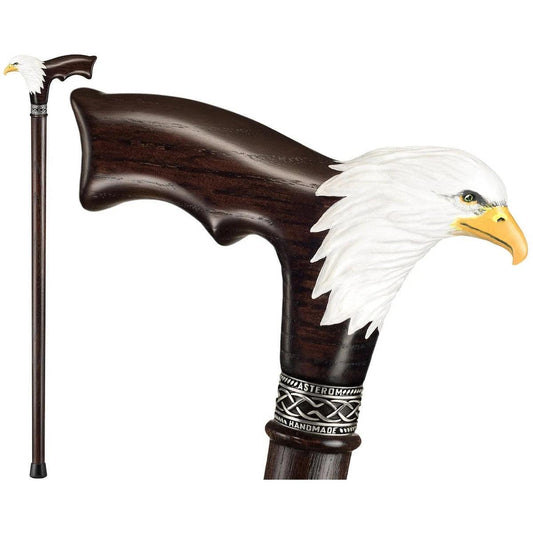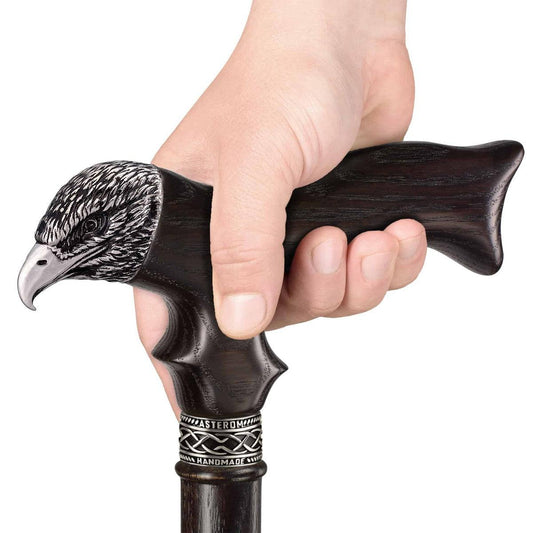The Intriguing World of Burl Wood: A Touch of Nature's Artistry
In the realm of woodworking, there are few things that carry the mystique and natural allure of burl wood. It’s akin to the marble of the forest, with swirling patterns that whisper tales of the tree's silent resilience against environmental stressors. When I speak of stabilized burl, I refer to wood that has been fortified and preserved, ensuring that the remarkable patterns etched into it by time and nature are not lost to the fragility of their origin.
Stabilization is the process through which this wood is permeated with resins, lending it the strength to stand the test of time, much like steel rods reinforce concrete. The burl, with its intricate patterns, is more than a mere imperfection; it is the evidence of a tree’s struggle and triumph over adversity. As such, this wood is priced not only for its rarity but for its storytelling - each piece is as unique as a fingerprint, as distinctive as the tree from which it came.
Burl wood is not simply found on any tree - its presence is the result of a tree’s valiant struggle against environmental stress, and not all trees exhibit this form of rugged beauty. The Redwood, for example, is known to be a generous host to these gnarled treasures. Each burl is a world unto itself, and in its rarity lies its value. To find a large, well-formed burl is akin to uncovering a gemstone in the rough; and the rarest of them, like the elusive Amboyna burl, can command the price of a small fortune.
For us who work the wood, to hold a piece of burl is to touch history - it's a labor of love that connects us to the ancient dance between growth and survival. The worth of a burl, therefore, is not merely in its monetary value but in its story, its provenance, and its ability to inspire. Its value to woodworkers is both aesthetic and philosophical; it represents the raw beauty of nature, the joy of craftsmanship, and the satisfaction of bringing forth the hidden splendor in what was once a mere woody outgrowth.
Let us not forget that this material we cherish is not just a "burl," it is a "burr" to some, adding to the intrigue and the patchwork of regional vernaculars that enrich our craft. As we move through the rhythm of selecting, cutting, and shaping this wood, we are reminded of the delicate balance of nature's creations and our role in bringing them to light.
Crafting Eternity: The Art of Stabilizing Burl Wood
Nestled within the intricate journey from tree to treasure lies the alchemical process of wood stabilization, a subject close to my heart and craft. To stabilize a burl is to ensure its timelessness, to cloak it in durability without stripping it of its raw charm. This is not a mere optional step but rather a crucial transformation that enables the wood to be worked upon and appreciated for generations to come. As I often tell aspiring woodworkers, neglecting to stabilize a burl is akin to building a castle on sand – precarious and transient.
Stabilization is the woodworker's defense against the innate fragility of burl wood. Given its tumultuous formation, a burl is prone to splitting – a heartbreak for any artisan. The prevention lies in stabilization, an act as much scientific as it is artistic. By impregnating the wood with a special resin, we not only prevent the demise of the wood but also enhance its natural beauty, imbuing the piece with a luster that is as durable as it is striking.
The question arises, can this process be undertaken within the humble confines of one's home workshop? Indeed, it can. With the right materials and a dash of patience, one can turn their domestic space into a sanctuary for preserving nature's artwork. We use stabilized wood for the same reason an archivist might use acid-free paper – to protect and preserve. And yes, like any fine piece of art, stabilized wood benefits from a finishing touch, a sealant that accentuates its beauty and defends against the elements.
In the professional realm, wood stabilization is not just a process but a craft in itself. It involves a careful balance of pressure, vacuum, and the delicate timing of curing. The choice of resin is pivotal – it is the difference between a wood that merely survives and one that thrives. Each type of resin – from the quick-curing cyanoacrylates to the robust polyesters – serves a specific purpose and wood type. And much like the timing of a perfect joke, the timing of the drying process before stabilization is crucial. Too soon, and the wood may warp; too late, and the wood may crack.
Ultimately, the act of stabilization does indeed render the wood harder, more resilient to the vagaries of climate and time. Yet, the process never robs the wood of its soul – the organic narrative that makes burl wood so deeply revered. So, when I speak of stabilizing wood, I speak of a pledge to honor the story of the tree, to preserve the whispers of the forest, and to ensure that the tales etched into each swirl and knot endure beyond our fleeting moments. It is not just wood that we stabilize – it is history, art, and the very essence of nature itself.

Characteristics of Stabilized Wood:
In the grand tapestry of woodworking, the term "stabilized wood" is spoken with a certain reverence, for it represents a triumph over the limitations imposed by nature. To answer the musings of the curious mind, stabilized wood is not entirely waterproof, but it is indeed water-resistant. This subtle distinction means that while it can repel water to a degree, immersion is not advisable. The process of stabilization, however, bestows upon the wood a robustness that is uncharacteristic of its untreated brethren.
As I often reflect upon my own experiences with stabilized wood, I marvel at its reinforced strength, which makes it a darling of artisans and craftsmen alike. It’s akin to reinforcing the spine of a venerable tome, allowing it to withstand the rigors of time and use. And yes, the density of this fortified medium does increase, lending the wood a heft that speaks to its enhanced durability. The weight of stabilized wood is a marker of its quality and longevity, often making it slightly heavier than its non-stabilized counterpart.
Carving into stabilized wood is a pleasure that many woodworkers seek. The resin within the fibers allows for smooth cuts and a finesse in detailing that would make even the most intricate of designs possible. Sanded to perfection, the burl reveals a tapestry of colors and patterns, each more mesmerizing than the last. And should time wear down its splendor, the possibility of refinishing breathes new life into the piece, allowing the cycle of creation to continue.
The adherence of wood glue to stabilized wood is much like a well-matched partnership – strong, reliable, and enduring. This compatibility opens up new possibilities for construction and design, expanding the woodworker’s canvas of creativity. Furthermore, the question of staining stabilized wood brings to light its versatility. Yes, it can be stained, and the results are often spectacular, with the resin accentuating the stain, bringing depth and warmth to the grain that is utterly captivating.
Wood Durability and Properties
Embarking on the journey of understanding wood and its myriad forms leads us to confront a compelling truth: not all woods are candidates for stabilization. The delicate dance of art and science that is wood stabilization cannot, unfortunately, be applied universally. Certain woods, often those of an exceedingly porous or greasy nature, defy the process, refusing to bond with stabilizing resins. They remain, in their natural state, a reminder that some aspects of nature demand to be appreciated as they are, untouched by human intent.
The maturation of burl wood is a study in patience. It's a process that cannot be rushed, much like the aging of a fine wine. Depending on the thickness and type of burl, drying can span from several months to a year. Time here is a craftsman's ally, ensuring the wood's readiness to reveal its beauty under the artisan's touch. The drying of a wood burl, then, becomes a meditative pause in the cadence of creation, a period where the burl sheds its moisture and prepares for its transformation.
In the annals of woodworking lore, the title of "strongest wood" is often bestowed upon the Australian Buloke, an ironclad species that challenges even the sharpest of tools. Its density is a testament to its strength, and it stands as a pillar of durability in the wood community. On the other end of the spectrum, balsa is often cited as the weakest, a wood so light and airy that it seems to defy the very definition of wood, yet it finds its strength in applications where weight is the enemy.
Longevity in wood is the promise of a legacy. Woods like the ancient Bristlecone Pine, Teak, and the venerable Oak are renowned for their enduring nature, often lasting for centuries if cared for properly. These are the woods that hold stories in their rings and time in their fibers. Equally impressive is the natural resilience of woods like Cedar, known for its defiance against rot when faced with the relentless assault of water.
As a connoisseur of woods and their stories, I find myself in awe of their diverse capabilities and characteristics. Each type of wood holds a secret to its resilience, its purpose, and its place in the natural world. Understanding these traits is not merely academic; it is essential for any true craftsman. The knowledge of what wood to choose, how long to wait for its readiness, and how best to protect its natural splendor is the sacred lore of our craft. It is here, in the heartwood of these ancient sentinels, that the wisdom of the ages is preserved, waiting to be unlocked by those who seek to learn the language of the forest.
Harvesting with Heart: The Ethical Pursuit of Burl Wood
The quest for burl wood is not merely an aesthetic endeavor but a stewardship, a careful balance of admiration for nature's art and the ethical implications of its acquisition. Harvesting a burl is a delicate operation, one that, when done correctly, does not necessitate the end of a tree's life. Skilled artisans, who I liken to surgeons of the forest, can extract a burl with precision, ensuring the tree continues to thrive. This respectful approach to harvesting allows us to enjoy the beauty of burl wood without the specter of environmental damage lurking in the background.
The question, however, is layered. Is it harmful to remove a burl? The answer lies in the method and motive. A burl, in its essence, is a tree's response to stress, a scar that has been turned into a badge of beauty. When removed responsibly, the tree's life can continue unabated. Yet, caution is the word of the day, for an injudicious cut can lead to the tree's demise. It is here that our ethics are tested, in the choice between the tree's prolonged contribution to the ecosystem and the immediate gratification of possessing its burl.

The Timeless Tapestry: Burl Wood in the World of Style
Moving through the forests of fashion and trends, one might wonder if the allure of burl wood is waning. To this, I say, burl wood is beyond the fickle winds of trendiness; it is timeless. Its unique patterns are the fingerprints of nature, a statement that transcends the ephemeral nature of style. Burl wood has not, and I posit, will not go out of style. Its presence in fine woodworking, in the world of luxury furnishings, and in the realm of artisanal crafts speaks of a legacy that is continuously being reborn.
Burl wood’s enduring appeal is rooted in its ability to tell a story, to evoke emotion, and to connect on a primal level with our love for the natural world. It carries within it the whispers of the woods, the ballet of light and shadow over its complex grain. The fascination for burl wood is not merely a fleeting affair but a long-term romance with the soul of the wilderness. It is as much a part of our heritage as it is a beacon for future designs, ensuring that burl wood remains not only in style but also a signature of sophistication and elegance.
So let us lay to rest the notion that burl wood's chapter is closing. It remains a vibrant, vital part of our artistic expression, continually evolving and finding new avenues to inspire and captivate. Whether gracing the halls of a stately home or the workshop of a meticulous craftsman, burl wood stands out as an enduring protagonist in the story of human creativity. It is not a question of whether it is in style, but rather how its story will continue to unfold in the hands of those who cherish it.

The Enigma of Burls: Identifying Nature's Hidden Jewels
The tapestry of the forest is rich with secrets, and among the most cherished are the burls—those enigmatic growths that cling to the sides of trees like precious tumors. The art of identifying a burl is one of the subtleties that sets the seasoned woodworker apart from the novice. It is not merely a lump or a swelling on a tree; it is a complex ballet of grain, a swirl of wood that speaks to the initiated of hidden beauty. One must approach a tree with the same respect and scrutiny as a gemologist would a rough diamond, for within this wooden cocoon lies potential magnificence.
When I teach the uninitiated to seek out these natural wonders, I advise them to look for the unusual. A burl will often manifest as a rounded outgrowth, a distortion in the uniformity of the trunk or branches. It’s a visual whisper in the forest, a call to those who know how to listen. The tree does not brandish these jewels openly; they are often hidden beneath the canopy, shrouded by bark or leaves, awaiting the discerning eye.
In the exploration of burl wood, we journey through the forests of craftsmanship, history, and artistry, uncovering the rich tapestry of nature's design. This article has navigated the swirling patterns and rugged beauty of burls, delving into the process of stabilization that ensures these natural masterpieces endure through time. We've touched upon the ethical considerations of harvesting, the intricate process of identifying burls in the wild, and the profound impact of burl wood in the world of style and design.
Burl wood embodies a confluence of strength, beauty, and resilience, transcending mere materiality to become a symbol of nature's capacity for wonder. Its rarity and the meticulous process required to preserve and celebrate its beauty speak volumes about our relationship with the natural world. It invites us to ponder the balance between utilization and conservation, urging a stewardship that respects the origins and stories of these extraordinary formations.
The narrative of burl wood is a testament to the art of woodworking, where each piece serves as a canvas for the expression of human creativity and the preservation of nature's marvels. It challenges artisans to honor the legacy of the trees, transforming these symbols of struggle and survival into objects of beauty and contemplation. In the hands of those who cherish and understand its value, burl wood continues to inspire, bridging the gap between the ancient forests where it originates and the spaces we inhabit.
As this article concludes, it's clear that burl wood's allure is not merely in its physical appearance but in what it represents—a dance between the ephemeral and the eternal, a reminder of our place within the natural world, and a call to preserve the extraordinary beauty that exists around us. The intrigue of burl wood, with its unique patterns and storied origins, remains a touchstone for artisans, collectors, and admirers, ensuring that its legacy endures as a testament to nature's unmatched artistry.
FAQs
What does stabilized burl mean? Stabilized burl refers to burl wood that has been treated with a stabilizing resin. The process involves impregnating the wood with a stabilizing agent, typically a heat-cured resin, which reinforces the wood’s structure, protects it from environmental factors, and maintains its beauty.
How do you stabilize a burl? To stabilize a burl, you first dry it thoroughly, then submerge it in a stabilizing resin under a vacuum to remove air from the wood cells. After saturation, the wood is then cured, often with heat, to harden the resin, leaving the wood stabilized.
Is stabilized wood waterproof? Stabilized wood is water-resistant, not waterproof. It can repel water and handle exposure to moisture better than untreated wood but should not be submerged or exposed to water for extended periods.
Do you have to stabilize burl? Stabilization is not mandatory but highly recommended for burl wood, especially if it will be used in environments subject to moisture or for items requiring enhanced durability.
How do I keep my burl from splitting? To prevent splitting, slowly and properly dry the burl to reduce internal stress, then stabilize it with resin. This adds strength and reduces the wood’s tendency to split as it expands and contracts with changes in humidity.
Is stabilized wood stronger? Yes, stabilized wood is generally stronger than its non-stabilized counterpart due to the added resin, which reinforces the wood's natural structure.
What woods cannot be stabilized? Woods that are extremely oily or have a very loose cellular structure may not stabilize well, as the resin may not properly penetrate or adhere to the wood fibers.
Can you carve stabilized wood? Yes, you can carve stabilized wood. It may actually be easier to work with than untreated wood due to its consistent strength and reduced likelihood of chipping or splintering.
Does stabilized wood need a finish? While stabilized wood has been reinforced and sealed internally, applying a finish can provide additional surface protection and enhance the wood’s natural beauty.
Can you harvest a burl without killing the tree? Yes, burls can be harvested without killing the tree if done carefully and correctly, similar to pruning. However, it should be done by experienced individuals to minimize harm to the tree.
What tree has a lot of burls? Redwood trees are known for having a significant number of burls, but many other tree species can also develop burls.
Is it bad to cut a burl off a tree? Cutting a burl off a tree can be harmful if not done properly. It should be performed by experienced individuals or arborists to ensure the health of the tree is not compromised.
Can burl wood be sanded? Yes, burl wood can be sanded. Care should be taken due to the irregular grain patterns. Stabilizing the wood beforehand can make sanding easier and the result more appealing.
How long does it take for burl to dry? The drying time for burl wood can vary significantly, from several months to a year or more, depending on the size and species of the wood. Proper drying is crucial to prevent cracking and splitting.



